The 5 Best Boat Jack Stands for 2024
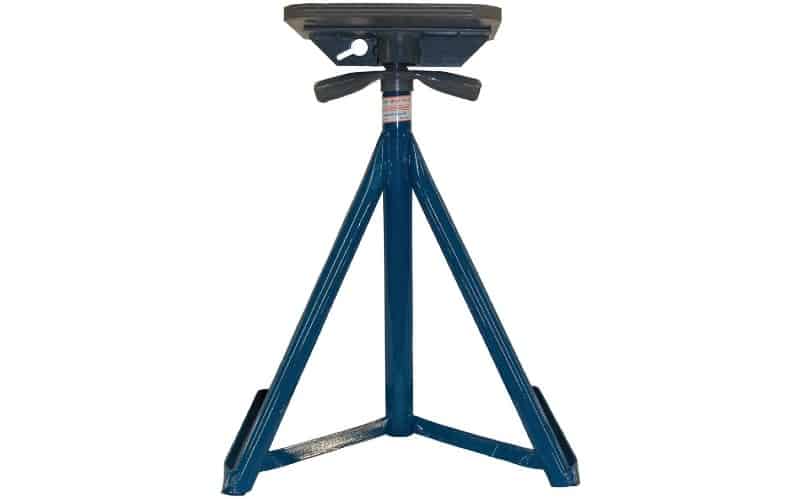
Brownell MB-3 Powerboat Stands
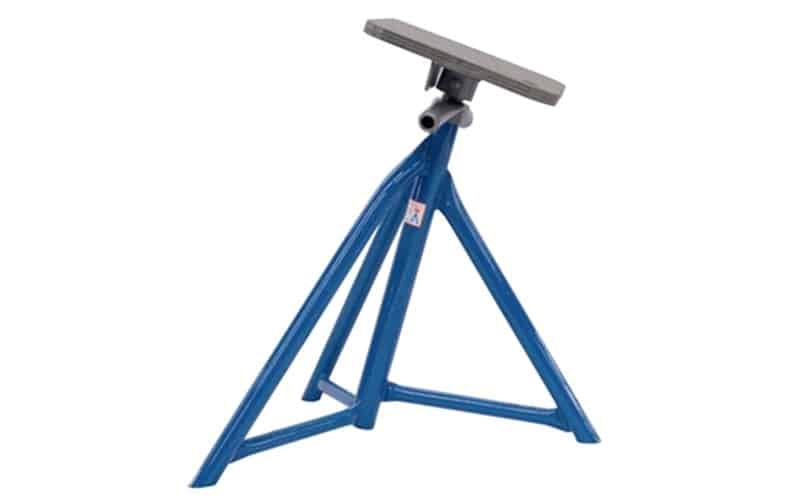
Brownell Angled Sailboat Stands
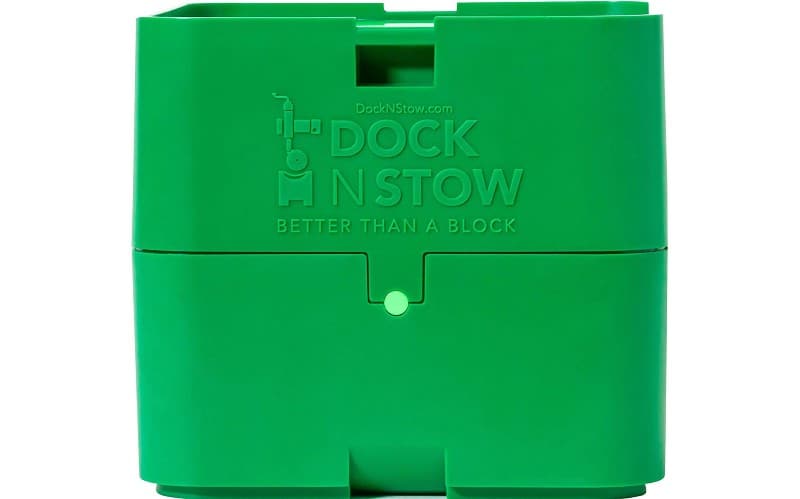
Dock N Stow Jack Stand Leveler
It’s no big secret that a lot of boaters don’t really bother with boat stands when it comes to storage. Often the boat stays on the trailer for the whole off season or, if it is being put up, cinder blocks and bricks with boards do most of the heavy lifting. And this does work out a lot of the time for a lot of boats. But it’s not the best or the safest way to store your boat, or to get under it to do any painting. You need to get your boat on stands for safety and stability, especially for vessels with a larger keep like sailboats. Stands provide that support and stability that prevents damage.
Brownell MB-3 Powerboat Stands

Brownell stands are some of the best boat stands on the market and they are quite versatile. Obviously you’ll need to adjust based on the size of your vessel but the MB-3 stand is a great option for most power boaters. Look for larger or smaller based on your needs, however.
As with any stands you’ll want a pair of these on either side of your boat for every 10 feet of boat at most. For heavier boats I’d recommend every 8 feet. Also, a separate keel standing, again, depending on what kind of boat you have, could also be needed.
Brownell motorboat stands are certified to a safe working load of 20,000 pounds. If you want to know how tough these are, according to the company, in over 60 years there has never been a report of a Brownell stand failing. Not once. So there you go. These are going to get the job done and do it well.
The solid steel center rod is precision threaded. The top swivels up to 25 degrees to allow for the perfect fit against the hull of your boat. Make sure you’re using them on even, flat ground with boards underneath to prevent sinking or tilting.
Brownell Angled Sailboat Stands

The major difference between a Brownell motorboat stand and a Brownell sailboat stand is the angle, as you can see. They’re built with a 23-degree angled base. Because of the shape of a sailboat, you need angled stands on the sides of the hull. It also works on powerboats with steep angled hulls.
One of these stands on either side of your sailboat keeps it snug and secure. Each Brownell sailboat stand is tested to withstand up to 20,000 pounds. But remember, as with any of these boat stands, their job is not to hold the weight of the boat. It’s to support the boat. You need to have the boat up on blocks to support the actual weight under the center of the vessel, holding its weight at the bow and the stern.
Place your sailboat stands every 8 to 10 feet along the side of your boat to keep it secure. Because of the already angled base and the swivel mounted top, you have 45 degrees to work with in terms of security the stand against your boat.
Remember, with sailboat stands, there is a safety chain that must be secured under the boat from parallel stand to parallel stand. This provides tension and stability. The stands are unable to slip once they are linked together from port to starboard under the boat. This absolutely has to be done or you run the risk of one of the stands giving way and your boat collapsing.
Attaching a safety chain is very easy as there is simply a notch in the welded crosspiece of the stand. Secure a link of the chain and then make your adjustments until the stand is secure.
Dock N Stow Jack Stand Leveler

This is an unusual entry here but it’s a good one and well worth looking into. Not necessarily a boat stand on its own, the Dock n Stow is a way to stabilize and level your stands or jacks and is basically the innovative future of the traditional wooden blocks or cinder block most people use to hold up their boat.
These are able to support a tongue jack, a stand, a support pole or really anything under your boat or trailer. One block has a 5000 lb capacity when used under a round or square foot or post.
The big benefit to Dock N Stow is that you can actually mount these to your trailer frame when not in use to keep them secure and out of the way. Then, when you do need them as keel blocks, they’re right there for use. They’re lighter than bricks or cinder blocks and far less damaging as well. Even wood blocks will break down over time, but these are designed to be weather and UV resistant. That means they can also easily handle water, freshwater or saltwater, as well.
Brownell Keel Stands
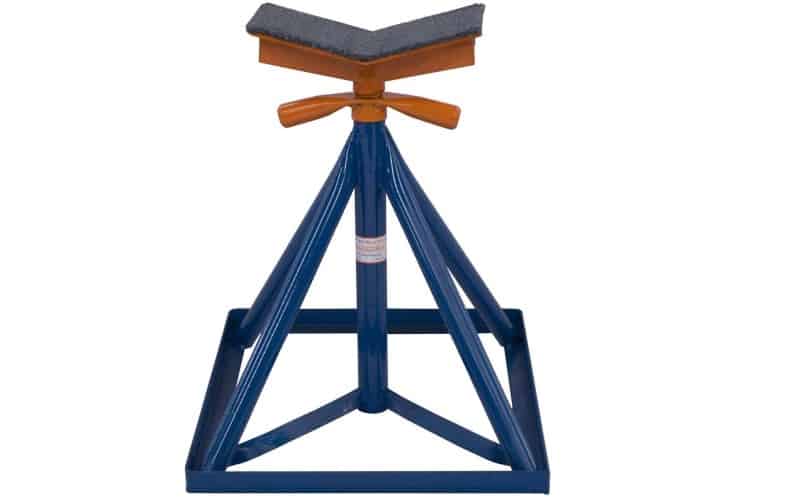
Back to Brownell again for their keel stand. The difference between a keel stand and a regular boat stand is significant. The other boat stands are not designed to hold weight. Many people don’t realize this at first but it’s true. The job of most boat stands is simply one of support and balance. They prevent the boat from shifting or falling over. But a keel stand is different. This is designed to hold the keel and the weight of the boat. The keel stand I have recommended here can handle 20,000 pounds so it’s a significant load that it is able to bear and likely more than suitable for most boaters. That said, Brownell offers keel stands rated for up to 80,000 pounds if you need something that can handle a larger vessel.
The Brownell keel stand is very easy to set up and adjust to the proper height. Just remember, even though these keel stands have a solid square base, you’ll want blocks under them to ensure even, reliable support.
Esco 3-Ton Capacity Jack Stand
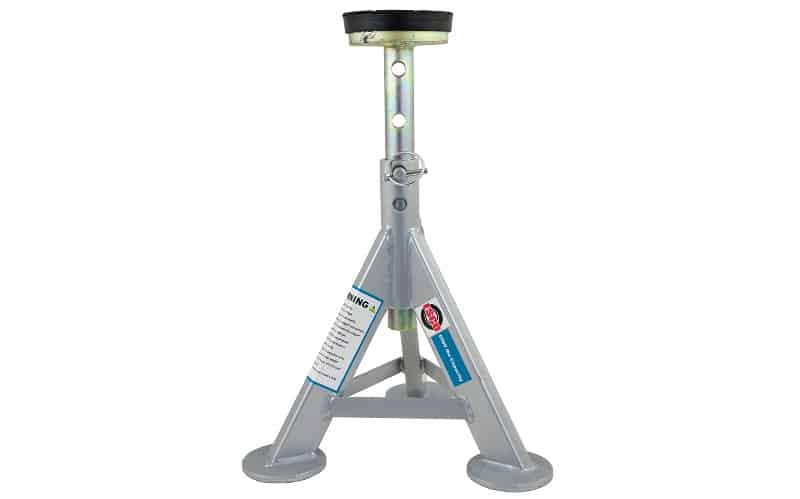
Esco’s 3-ton capacity jack stand is, as the name suggests, a jack and a stand. When you need more than just a stand to help raise your boat up, this is a good option. It has a load capacity of 6,000 pounds with a maximum height of 21.5 inches. There are 10 different adjustable levels you can take the stand to, as well. Remember, if you’re jacking up the rear of your boat and want to use two of these, you need a friend to help you raise them evenly in a synchronized way to avoid your boat slipping.
The flat rubber top offers cushioning for the hull and is less likely to leave scratches than some other jack stands. A locking pin ensures you can lock the stand in place when you achieve the desired height. A powder coating for the finish will help fight off rust as well.
Things to Remember
Fortunately there isn’t a whole lot to worry about in terms of sailboat stands. They are typically very simple so shopping for them is pretty easy once you know the size you need. That said, there are a few things you’ll still want to keep in mind
Type of Boat
I’ve offered up suggestions for both power boats and sailboats here. The shape and function is very distinct for each. Basically, the shape of your boat is going to determine what stand works best for you. A boat that is more flat on the bottom doesn’t need the angled support of a sailboat stand and vice versa. Make sure you’re accommodating your boat and its shape as best as you can.
Quality
This is probably your biggest point of consideration. You need a quality stand to do the job right. And yeah, that seems obvious, but you do need to be careful. If you head to Amazon and search for boat stands, you’ll find the Brownell stands, for instance, but you may also find some stands from brands you’ve never heard of. And many of these stands are not specifically boat stands. Some are pipe stands or just general jack stands for work tables, trailers, cars and so on. These all could potentially work but you may be taking a risk with each one. Check the reviews if you’re looking to buy an off-brand stand not specifically designed for boats and see if anyone has ever used it for a boat and had a good experience.
That said, cheaper stands may also have poor welds and unreliable construction. If you see in any reviews that the head snapped off a stand or anything similar, you may want to reconsider. If your boat is heavy enough, you don’t want to risk a potentially bad weld to hold it.
The Bottom Line
The most important thing to remember with boat stands is proper use. They don’t hold the weight of your boat, they just support it and keep it steady. Make sure they’re placed every 8 to 10 feet along the hull and make sure they’re secured with chains. As always, stay safe and have fun.
Categories: Boats











